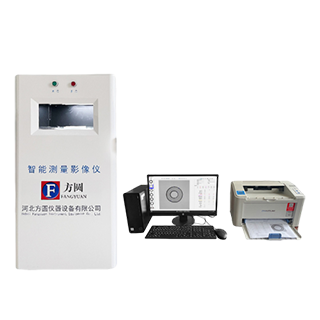Polyolefin Cross-Linking Techniques Using Ultraviolet Irradiation in Industrial Applications
Advancements in Ultraviolet Irradiation for Cross-Linking Polyolefin Materials
Polyolefins, a family of thermoplastic polymer resins, have become ubiquitous in a variety of applications due to their versatility, cost-effectiveness, and favorable mechanical properties. However, enhancing their thermal and chemical resistance, particularly for applications in automotive, aerospace, and construction sectors, has led to the exploration of cross-linking techniques. Among these, ultraviolet (UV) irradiation has emerged as a promising method for achieving efficient cross-linking of polyolefin materials. This article discusses the mechanism of UV irradiation cross-linking, its advantages, application processes, and the potential outlook for future innovations.
The Cross-Linking Mechanism
Cross-linking is a process where polymer chains are chemically bonded together, resulting in a three-dimensional network structure. This network significantly enhances various properties of polyolefins, including heat resistance, mechanical strength, and chemical stability. UV irradiation cross-linking involves exposing polyolefin material to UV light of specific wavelengths, typically in the range of 200 to 400 nm. When polyolefin is irradiated, it leads to the formation of free radicals and other reactive species, which facilitate the cross-linking of polymer chains.
The efficiency of the cross-linking process greatly depends on several factors, including the type of polyolefin used, the presence of photoinitiators or additives, and the duration and intensity of UV exposure. Photoinitiators are crucial as they absorb UV light and initiate the cross-linking reaction by generating free radicals. The choice of photoinitiator can greatly influence the performance properties of the resulting material.
Advantages of UV Irradiation Cross-Linking
One of the primary advantages of using UV irradiation for cross-linking polyolefins is its rapid curing process. Unlike traditional thermal cross-linking methods that require extensive heating and longer production cycles, UV irradiation can achieve cross-linking at room temperature, significantly reducing energy costs and production time. Additionally, the process is environmentally friendly, as it often does not require solvents, and the energy consumption involved is typically lower than that of conventional methods.
Another significant benefit is the ability to precisely control the degree of cross-linking through adjustments in UV exposure time and intensity. This level of control allows manufacturers to tailor the properties of the polyolefin material for specific applications, whether they require high flexibility or rigidity. Furthermore, the process lends itself to continuous operations, making it highly suitable for large-scale manufacturing environments.
ultraviolet irradiation polyolefin cross-linked machine

Application in Industry
The application of UV-irradiated cross-linked polyolefin materials is extensive. In the automotive industry, such materials are used for fuel tanks, bumper systems, and other components that require enhanced durability and resistance to chemicals and heat. In the construction sector, UV cross-linked polyolefins are employed in insulation, roofing membranes, and protective coatings that demand improved weatherability and longevity.
The healthcare sector also benefits from UV cross-linking techniques, particularly in the production of medical devices and packaging that require sterilization. The ability to produce materials that can withstand sterilization processes without degrading ensures the safety and efficacy of medical supplies.
Future Perspectives
As the demand for high-performance materials continues to grow, the future of UV irradiation cross-linking technology for polyolefins looks promising. Ongoing research is focused on developing new photoinitiators that can operate effectively in different wavelengths, expanding the versatility of UV cross-linking applications. Furthermore, advancements in LED technology offer opportunities for more energy-efficient UV curing processes, enhancing manufacturing sustainability.
Innovations in hybrid materials that combine UV cross-linked polyolefins with other polymers or additives are also on the rise, leading to even more tailored materials that cater to specific industry needs. Collaborative efforts between academia and industry are crucial for pushing the boundaries of this technology, ensuring the continual development of groundbreaking materials with enhanced properties.
Conclusion
The use of UV irradiation for cross-linking polyolefins stands out as a transformative approach in material science, combining efficiency, sustainability, and versatility. As industries strive to meet higher performance standards, this technique holds the potential to unlock new applications and innovations, making it an exciting area of focus for researchers and manufacturers alike. The future of UV cross-linking technology is not just about enhancing polyolefin materials; it is about paving the way for next-generation products that can meet the challenges of an ever-evolving world.
-
reliable-performance-testing-with-advanced-aging-chamber-solutions
NewsAug.23,2025
-
advancing-precision-with-profile-projector-technology
NewsAug.23,2025
-
uv-led-ultraviolet-crosslinking-technology-innovation-and-prospects
NewsAug.23,2025
-
ensuring-safety-and-compliance
NewsAug.23,2025
-
electrical-properties-testing-in-modern-applications
NewsAug.23,2025
-
universal-tensile-testing-machine-applications-in-modern-electrical-and-material-testing
NewsAug.23,2025
 Copyright © 2025 Hebei Fangyuan Instrument & Equipment Co.,Ltd. All Rights Reserved. Sitemap | Privacy Policy
Copyright © 2025 Hebei Fangyuan Instrument & Equipment Co.,Ltd. All Rights Reserved. Sitemap | Privacy Policy

